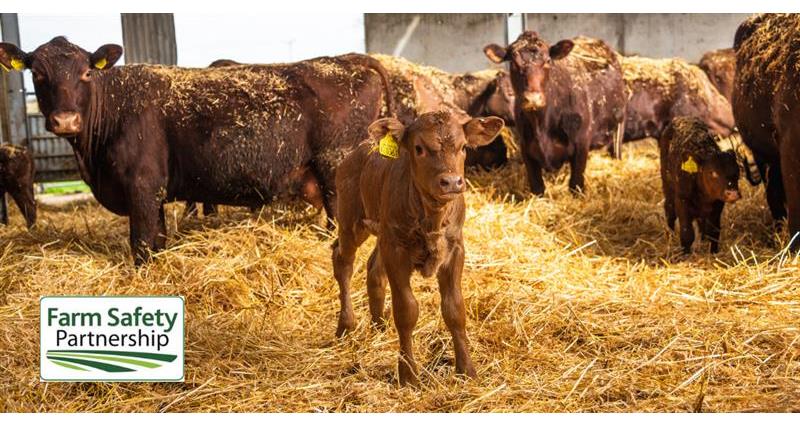Incidents involving livestock are one of the most common causes of both fatal and non-fatal injury in the farm workplace.
Deaths and injuries to farmers and their workers are often caused by:
- Poor equipment
- Ineffective methods of moving cattle
- An underestimation of the strength, speed or behaviour of cattle
- A lack of physical ability to do the demanding work that is inherent when working with cattle
NFU farm safety and transport adviser Tom Price said: “As with all causes of fatal injury on farm, there is nothing inevitable about death and injury caused by contact with livestock. There are risks when handling livestock and the important thing to do is manage them.
“That is why the NFU and partners in the Farm Safety Partnership (FSP) are focusing on safety around livestock during the next three months and highlighting steps that farmers can take to better manage risk to themselves, their workers and to the public.”
Farmers can reduce the safety risks when around livestock by taking these steps:
1. Select and use well designed handling facilities, in the yard, buildings and field. Keep them maintained.
- Good, well-maintained handling facilities are vital. A race and crush suitable for animals to be handled are must-haves. Make-shift gates and hurdles are not sufficient.
2. Be extremely cautious when entering a cattle enclosure and always have an escape route.
- If you have to attend to “downer” cattle or animals loose in boxes or isolation pens and it is not possible to secure them, make sure you have an escape route that will ensure you are not crushed if the animal rolls or stands suddenly.
- Further comprehensive guidance on equipment and handling can be found in the HSE guide AIS35.
3. Remove aggressive animals from the herd.
- Management of aggressive animals is vital for the safety of farmers, workers and members of the public. In recent inquests into the deaths of members of the public, evidence has come to light that animals with a history of aggressive behaviour had remained in the herd after non-fatal incidents. If there is a history of aggression farmers must take action to protect themselves and the public. Not to do so puts everyone risk and leaves farmers liable to enforcement action that can have very serious consequences.
- Aggressive animals must not be sold on to become a problem for another farmer.
4. Wherever possible separate livestock from the public and select fields without rights of way when cattle have calves at foot.
- On average two members of the public are killed in incidents involving cattle ever year. Almost all incidents are in fields and enclosed areas. The most common factors are cows with calves and walkers with dogs. To manage the risks, separate the public from livestock wherever possible and use fields without public rights of way when cows are with calves.
- Guidance from the HSE on cattle and public access is available in information sheet AIS17.
- NFU guidance on livestock and rights of way is available to members in Business Guide 407.
The stats
Every year the HSE publishes a report on safety in agriculture with details of the incident circumstances for every fatal incident.
Last year (2019-2020) there were two fatalities as a result of contact with livestock. In the current reporting year, the NFU has been made aware of seven fatal incidents involving farmers, farm workers and members of the public.
Many fatal incidents occur in situations which potentially could have been avoided if suitable handling facilities were used, lone working was avoided and an escape route was available.
The HSE report for 2019/2020 is available here.
Older persons need to be especially careful around livestock
On average, 65% of fatal livestock incidents happened to people over the age of 65 with some victims in their 70s and 80s.
Tom Price added: “Good handling facilities, safe practices and the effective management of aggressive animals will help reduce the risk for everyone but are especially important for older persons. This is because no matter how fit a person is, it is inevitable that with age comes a reduction in agility, responsiveness and resilience.
“It may be hard to accept after a lifetime in farming but farmers must consider very seriously, at any age, as to whether they still have the skills and physical ability to handle cattle safely and keep themselves free from harm.”
